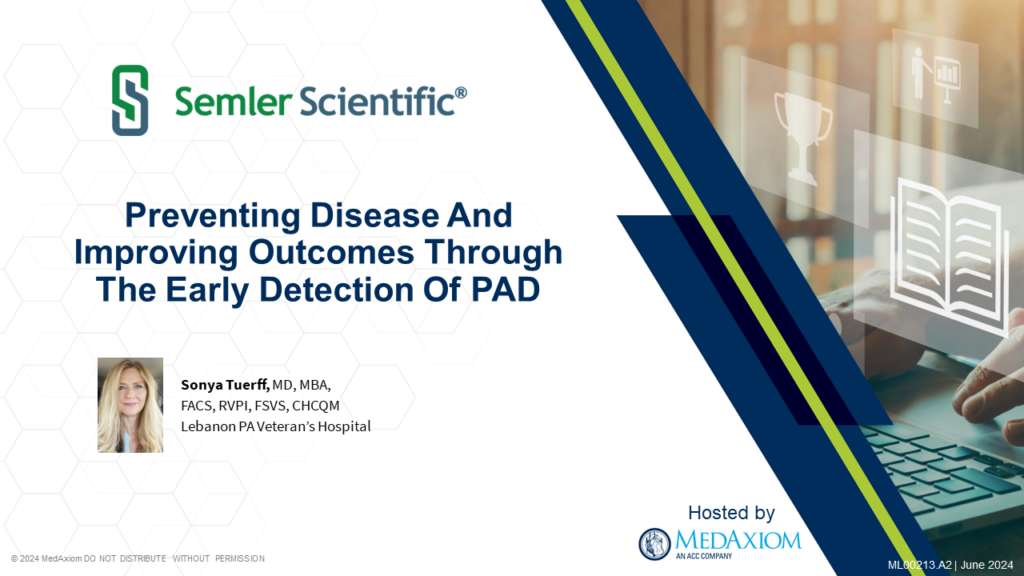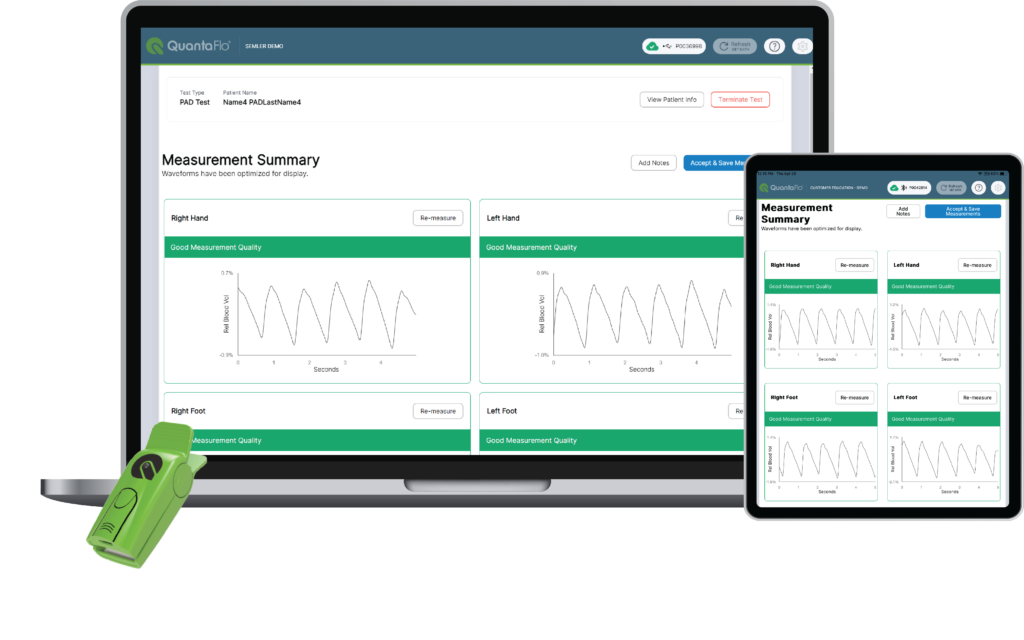
Challenges in Managing
Peripheral Arterial Disease
Managing Peripheral Artery Disease (PAD) poses several significant challenges for healthcare providers and patients alike. Understanding these challenges is crucial for improving detection, treatment, and patient outcomes.
Watch the video below to hear Dr. Sonya Tuerff discuss the challenges of managing PAD.
Limited Appointment Time
Healthcare providers often face constraints in their schedules, leading to limited time for comprehensive physical examinations and thorough history-taking. This can result in missed opportunities for early detection, especially with asymptomatic patient population or even those presenting with atypical symptoms.
Scheduling delays for any follow up may further impact timely follow up treatment plans.
Coverage for PAD Testing
PAD may not be covered by insurance, particularly for asymptomatic patients. This lack of reimbursement discourages both patients and providers from pursuing early diagnostic tests and preventive treatments.
Educational Gaps
There is a notable lack of education regarding PAD, particularly concerning early detection and holistic treatment approaches. Both patients and clinicians often lack awareness of the disease’s risks, symptoms, and management strategies, which can lead to delayed diagnosis and treatment.
Specialist Focus
Specialists often prioritize interventions or focus on their subspecialties, such as coronary artery disease. This can create a fragmented approach to care, where PAD may not receive the attention it requires in a broader cardiovascular context.

In this webinar, expert speakers discuss the importance of early detection of peripheral artery disease (PAD) in optimizing goal-directed medical treatment. Risk factor management and targeted appropriate interventions prevent disease progression and improve outcomes. Through a review of case examples, speakers illustrate the positive impact of volume plethysmography-based PAD detection at the point of care and multidisciplinary coordinated care on patient outcomes.
A Trusted Solution to Support Early Detection of PAD

Reliable, Rapid and Accessible
QuantaFlo® can be performed at the point of care in less than 3-minutes, eliminating the need for complex equipment and highly trained personnel. This makes it easier for healthcare providers to incorporate PAD testing into their routine practices.
A Patients Guide to Early
Detection with QuantaFlo

Why Early Detection Matters?
Detecting PAD early allows your healthcare team to discuss preventive steps and treatments that may help reduce your risks for complications. QuantaFlo offers accurate, quick results, providing you and your provider with the information needed to take proactive steps for better vascular health.

